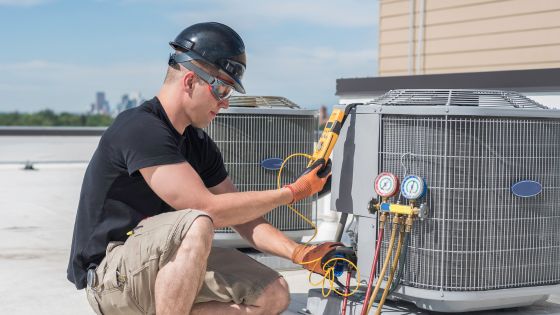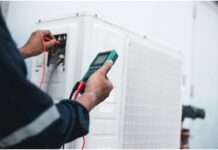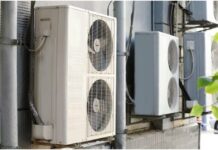The success of any HVAC system depends on selecting a pressure transducer that can meet the facility’s overall efficiency and comfort needs.
Many factors must be considered when determining which type of pressure transducer to use, such as ambient temperature, maximum velocity conditions, accuracy requirements, operating costs, environment-specific construction materials, and much more.
In this blog post, we will discuss all these elements that should be considered when selecting an efficient and comfortable HVAC setup, so read on if you want to make sure you’re making the right choice!
Understand What a Pressure Transducer Does
Have you ever wondered how engineers measure pressure in various industrial processes? The answer lies in a device called a pressure transducer. This small but crucial piece of technology is responsible for converting pressure into an electrical signal that can be interpreted by a measuring instrument or computer system.
It works by measuring the deformation of a diaphragm or other sensing element when pressure is applied. From there, the transducer converts that deformation into an electric signal proportional to the pressure.
Without pressure transducers, many critical applications like water supply systems or HVAC systems would be unable to function. So, if you ever have the opportunity to peek behind the scenes of an industrial process, keep an eye out for these little devices hard at work!
Consider the different types of pressure transducers available.
When it comes to measuring pressure, transducers are an indispensable tool. These devices convert physical pressure into an electrical signal, making it possible for us to monitor and control pressure levels in various applications.
But did you know several different types of pressure transducers are available? For example, piezoresistive transducers use a deformable material that changes resistance under stress to measure pressure.
There are also capacitive transducers, which use a flexible diaphragm to measure changes in capacitance. Each type of transducer has unique strengths and weaknesses, making it important to understand the options available.
Choose the Right Size for Your HVAC System
When it comes to choosing an HVAC system, size definitely matters. While you may think that bigger is better, the truth is that an oversized unit could cost you more money and leave you less comfortable. On the other hand, a system that is too small won’t be able to keep up with your heating and cooling demands.
So, what’s the solution? It all comes down to correctly sizing your HVAC system. You’ll enjoy optimal energy efficiency, improved comfort, and lower bills when you have the perfect fit.
Ensure Accurate Measurement
In any field, accurate measurement is crucial for obtaining reliable results. Whether it’s in science, engineering, or even cooking, slight variations in measurement can affect the end product in significant ways. For example, a tiny miscalculation in a recipe could result in a ruined dish.
As such, it’s essential to ensure precise and consistent measurements. Fortunately, advances in technology have made this task easier than ever before. From calibrated scales to digital thermometers, a wide variety of tools are available to help you achieve accurate measurements.
Check for Calibration and Efficiency Ratings
Ensuring the accuracy and efficiency of your testing equipment is crucial for maintaining quality standards and staying ahead of the competition. One way to achieve this is by regularly checking for calibration and efficiency ratings.
Calibration is the process of adjusting the precision and accuracy of a measurement device to a standard reference to ensure reliable results. On the other hand, efficiency ratings indicate how well the equipment converts inputs into useful outputs for the intended purpose.
Know When to Change Your Pressure Transducer Out
Pressure transducers are essential instruments that help ensure accurate measurements in various industrial applications. The accurate readings provided by these devices are crucial to maintaining optimal performance and avoiding potential hazards. However, pressure transducers can become less accurate over time, leading to erroneous readings.
Therefore, knowing when to change your pressure transducer is essential to ensure that your readings are still reliable and safe. Factors that indicate that it is time to replace your pressure transducer include sudden fluctuations or drops in pressure readings, physical wear and tear, or the device’s lifespan.
Regular maintenance and calibration can help prolong a pressure transducer’s lifespan, but knowing when to change it out altogether can prevent costly equipment failures and ensure the safety of your working environment.
In sum, there is a lot to consider regarding pressure transducers. From understanding what they do and how they work to making sure you’ve chosen the right type that fits all of your needs, having the right one can make a huge difference for your HVAC system.
Just remember to check the accuracy and calibration ratings; size matters. Make sure you understand the type you need for accurate readings, and know when it’s time to switch out your old transducer.




















